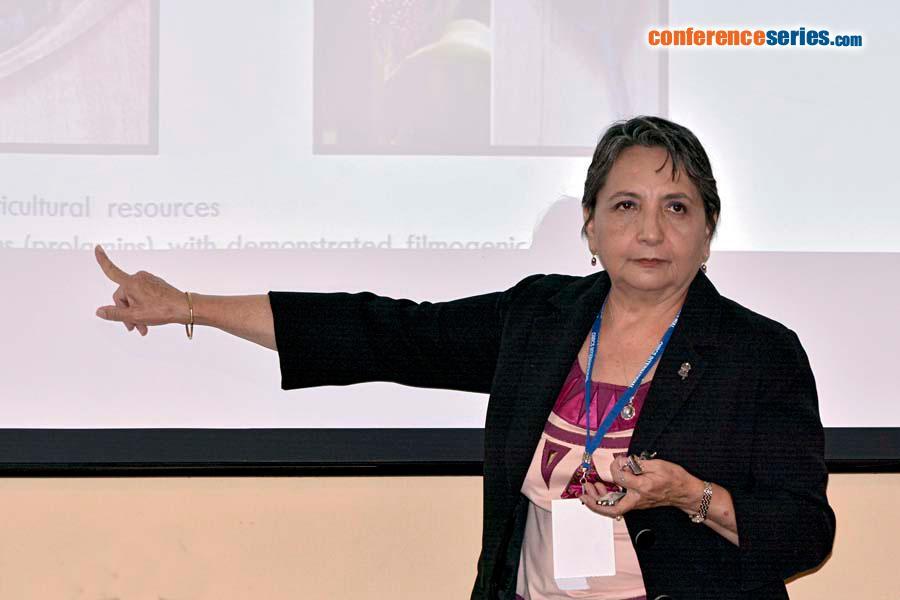
Cecilia Rojas de Gante
Tecnologico de Monterrey, México
Title: Development of biodegradable films based on blue corn flour with potential applications in food packaging
Biography
Biography: Cecilia Rojas de Gante
Abstract
Using cereal flours as raw materials for obtaining thermoplastics do not require extractive operations, thereby making the process more sustainable. In this study, blue corn flour films were developed. Commercially-available blue corn (Zea mays L.) kernels were obtained from Guanajato (México). The cereal grain´s total composition (excluding the pericarp) is used. The blue corn flour was obtained according to the methodology described by Rojas de Gante et al. (2010). The plasticizing effects of two different polyols (glycerol and sorbitol) on the mechanical, thermal, and microstructural properties of flour films were researched. All films were transparent, with a light blue coloration and had an average thickness of 0.199±0.027 µm. The results showed that films plasticized with sorbitol had better mechanical properties and less affinity for water than those plasticized with glycerol. The sorbitol-plasticized films were more rigid and did not lose their integrity when immersed in water. The ATR-FTIR spectra of blue corn flour plasticizer with sorbitol showed the presence of the additional band at 1745 cm-1 characteristic of the carbonyl peak, which confirms the chemical linkages between sorbitol and a polymeric matrix. The effect of the plasticizer on the glass transition temperature (Tg) was characterized using differential scanning calorimetry (DSC). Tg decreased as the plasticizer content increased. Plasticized glycerol films showed lower Tg values than those with sorbitol. SEM observations showed that it was necessary to add plasticizer to maintain film integrity. The sorbitol-plasticized flour films revealed better adhesion between phases, and these films showed a compact structure.




